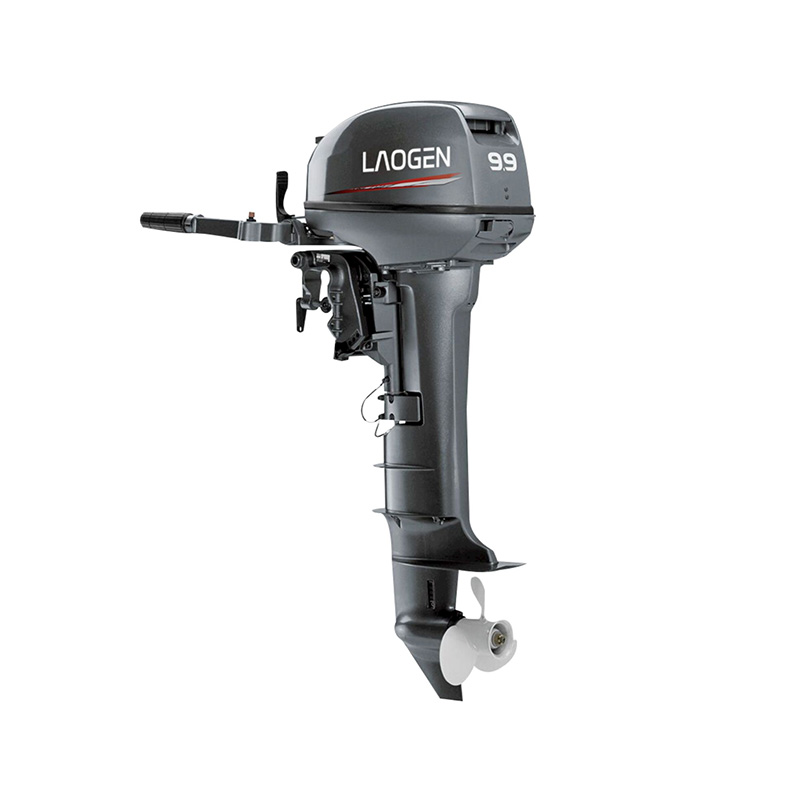2 stroke outboard motor principle and operation guide
Custom 2 stroke outboard motor manufacturing factory
When exploring the vast world of the ocean, the 2 stroke outboard motor has become the heart of many ship owners with its compact design, efficient power output and easy operation characteristics. However, for beginners and even experienced boat owners, an in-depth understanding of the working principle and correct operation steps of 2 stroke outboard motors can not only enhance the sailing experience, but also effectively extend the service life of the equipment. The purpose of this article is to provide a comprehensive guide to the principles and operation of 2 stroke outboard motors, so that every sailing enthusiast can easily navigate the ocean.
Basic principle of 2 stroke outboard motor
2 stroke outboard motors, as the name suggests, require only two piston strokes to complete a full working cycle, in contrast to four-stroke engines that require four strokes. This characteristic gives 2 stroke outboard motors greater efficiency and lighter construction, making them widely used in small boats, motorcycles and other lightweight power equipment.
The work cycle is divided into two stages:
1. First stroke: When the piston moves down from top dead center (tdc) to bottom dead center (bdc), the intake hole opens and fresh air and fuel mixture is sucked into the crankcase. At the same time, the residual gas in the combustion chamber is compressed until the ignition temperature and pressure are reached, and the spark plug ignits and triggers combustion. The high-pressure gas produced by the combustion quickly pushes the piston down, completing the process of work and exhaust.
2. Second stroke: As the piston begins to rebound and move upward, the intake and exhaust holes are closed one after another. The exhaust gas in the combustion chamber is pushed out of the vent hole by the fresh mixture, and the fresh mixture enters the crankcase through the intake hole to prepare for the next cycle. The piston continues to rise to the tdc, compressing the new mixture and waiting for the next ignition.
Operation and maintenance points
Now that we know how a 2 stroke outboard motor works, we'll explore how to properly operate and maintain your outboard to ensure its efficient operation and long service life.
1. Check before starting:
- check the oil-water separator to ensure that no moisture is mixed into the fuel system.
- check the fuel filter and clean or replace the filter.
- check the cooling system to make sure the water is clear.
- check the status of the spark plug and clean or replace it if necessary.
2. Mixing ratio of oil:
- the 2 stroke outboard motor uses pre-mixed oil, that is, a special two-stroke oil is added to the gasoline. The correct fuel ratio is crucial to the health of an engine. Usually, the recommended mixing ratio is 1:50 or 1:100, depending on the manufacturer's guidance.
3. Regular maintenance:
- replace the air filter regularly to keep the engine breathing smoothly.
- check and adjust ignition system, including spark plug clearance and ignition timing.
- clean or replace the exhaust pipe and muffler to ensure smooth exhaust emission.
4. Cooling and lubrication:
- 2 stroke outboard motors rely on the oil in the mix for lubrication, so it is very important to choose the right type and grade of oil.
- during use, pay attention to the engine temperature to avoid damage caused by overheating.
5. Safe operation:
- follow all safety procedures and wear appropriate personal protective equipment.
- when starting and operating outboard, ensure that there are no flammable materials around.
By understanding how a 2 stroke outboard motor works and following the above guidelines for operation and maintenance, you will not only be able to fully enjoy sailing, but also ensure that your outboard stays in top condition and accompanies you to explore more unknown seas.


 English
English русский
русский











